The popularity of tech noir films skyrocketed in the 1980s. In the current year, it is still popular. During the 2000s, a slew of tech noir films were released. Tech noir is a genre of fiction that combines elements of science fiction with film noir. The ideas of tech noir films were popularized in the 1980s with films like “Blade Runner” and “The Terminator,” and are also known as cyber noir, future noir, and science-fiction noir. These films have a noir vibe to them, but they also have science fiction components to them. The majority of the characters are evocative of those from a science fiction film, and the storylines are classic noir.
“I, Robot,” “Minority Report,” and “Blade Runner 2049,” all of which have recently been released, are examples of modern tech noir films. Some of the elements of tech noir are plots that generally include murder or mystery that must be solved by the hero, usually a detective. They may contain femme Fatales, but the vast majority of them feature sci-fi protagonists in dystopian or utopian settings. Many aspects of the film include science fiction and technology, as well as serious subject matter and a night backdrop. Today, we will take a look at a list of the Top 10 Tech Noir Films of All Time. Let us get started!
Blade Runner (1982)
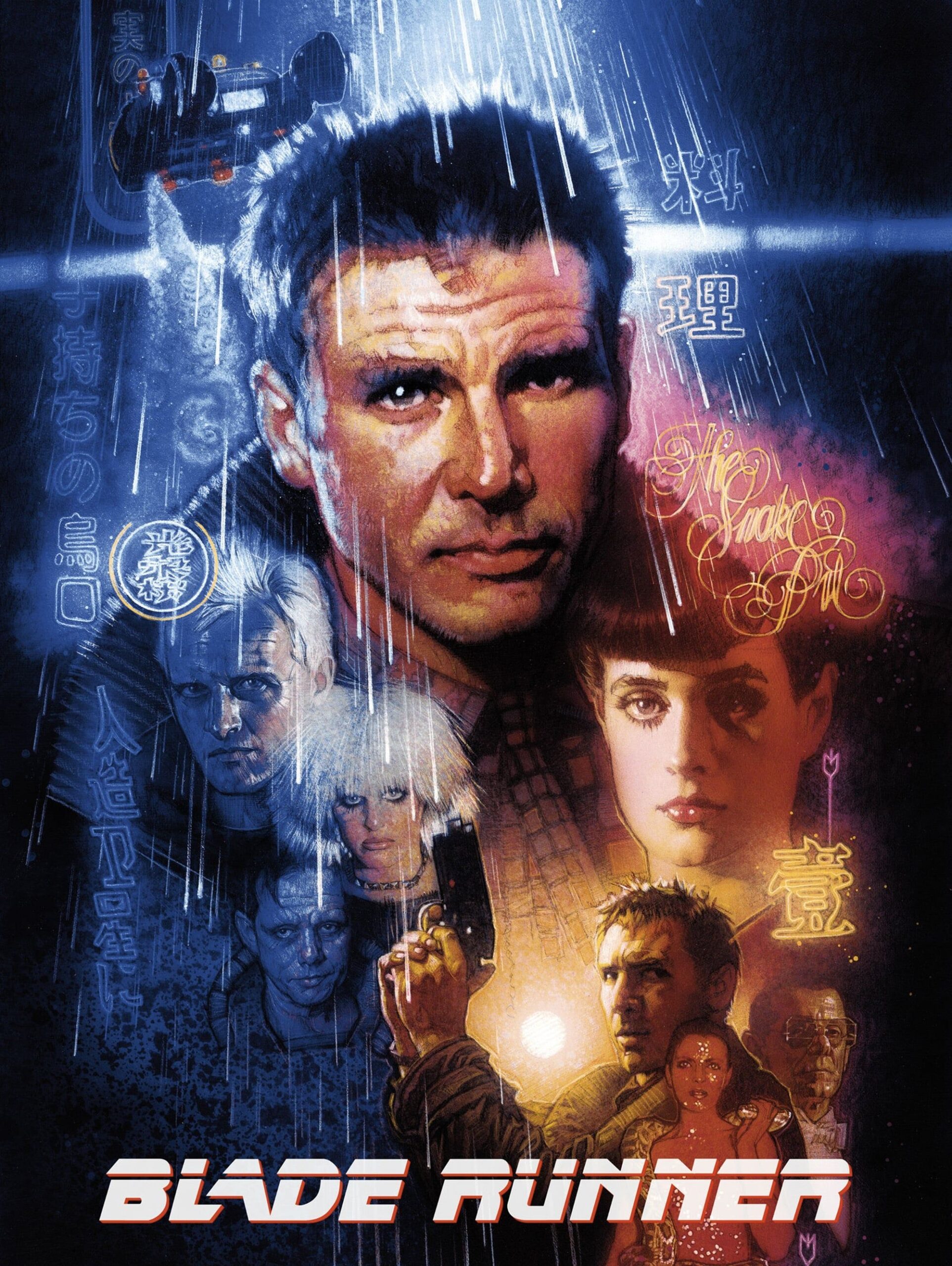
Ridley Scott’s 1982 science-fiction blockbuster “Blade Runner” was adapted by Hampton Fancher and David Peoples. It is an adaptation of Philip K. Dick’s 1968 novel “Do Androids Dream of Electric Sheep”, starring Harrison Ford, Rutger Hauer, Sean Young, and Edward James Olmos. The film is set in a dystopian future of 2019 in Los Angeles, where the powerful Tyrell Corporation has bio-engineered synthetic humans known as ‘replicants’, to work on space colonies.
When a crew of advanced replicants commanded by Roy Batty flees back to Earth, burnt-out officer Rick Deckard grudgingly agrees to track them down. “Blade Runner” initially flopped in North American theatres and divided critics, but it eventually became a revered cult picture, regarded as one of the best science fiction films of all time. “Blade Runner” is a leading example of tech-noir cinema, praised for its production design, representing a decaying future.
The tale and its intellectual and emotional elements, some of which are unforgettable, reinforce Blade Runner’s candidacy as a noir. The cinema world is a dark realm, both in terms of its aesthetic aspects and the beliefs that drive it. With the near-constant rain and so many of the film’s pivotal sequences taking place at night, L.A. 2019 couldn’t seem any drearier than it does in “Blade Runner”.
Overcrowding, squalor, and danger await those who make it their home. The environment is brilliantly designed, providing the film with the necessary sad, nihilistic atmosphere. Then there are the replicants; bizarre inventions of professional scientists and technicians working for untouchable businesses, in this instance, Tyrell. Their very existence raises troubling ethical and existential concerns. Both these aspects together make this movie the embodiment of tech-noir cinema and an absolute treat. “Blade Runner” explores some key traditional noir themes and problems, and expertly twists them in a gorgeous science-fiction twist. It’s a wonderful blend of the two genres.
Minority Report (2002)
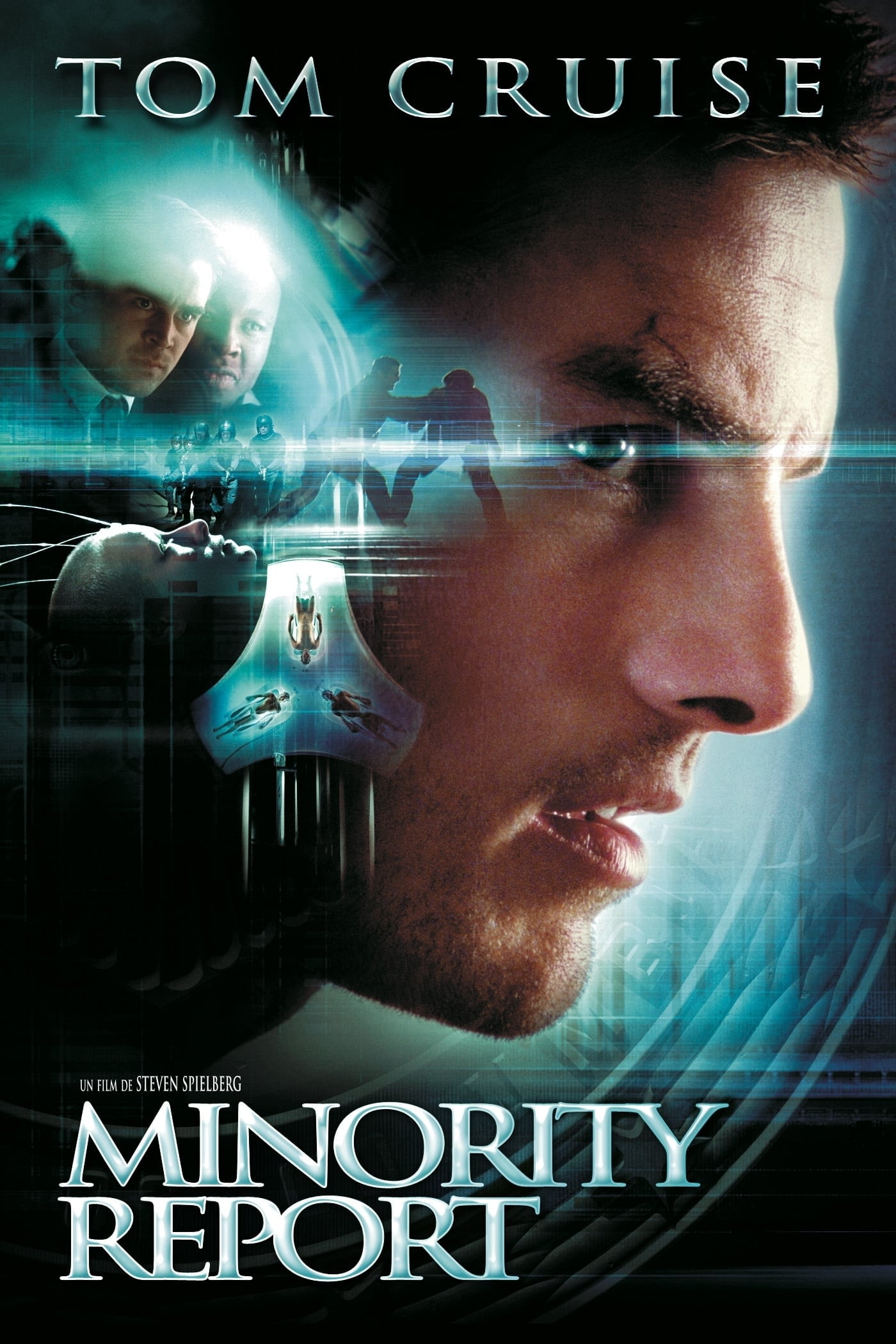
“Minority Report” is a 2002 American science fiction action film directed by Steven Spielberg, starring Tom Cruise. It is largely based on Philip K. Dick’s 1956 short story “The Minority Report.” The film is set in 2054 in Washington, D.C., and Northern Virginia, where ‘Precrime’, a specialist police force, apprehends criminals using foreknowledge provided by three psychics known as “precogs.” Cruise plays John Anderton, Colin Farrell plays agent Danny Witwer, Samantha Morton plays Agatha Lively, and Max von Sydow plays Lamar Burgess.
As the main protagonist is convicted of a crime he did not commit and becomes a fugitive, the film combines aspects of tech noir, whodunit, thriller, and science fiction genres, as well as a typical chase picture. The story, according to Spielberg, is fifty percent character and fifty percent really intricate storytelling with layers and levels of murder mystery and plot. The fundamental theme of the film is the conflict between free will and determinism. It investigates whether free will can exist when the future is predetermined and known in advance.
From a technological standpoint, Spielberg went to great lengths to create a simulation of what the world might look like in 50 years. To that purpose, he assembled a team of scientists and engineers who authorized several of the technologies seen in the film. These include voice-activated lights and appliances, personal virtual reality advertising that appears on walls when a person walks by, and cars that are no longer earthbound.
The special effects compliment the script’s inventiveness and not the other way around. “Minority Report”, like another genre-crossing film, “Dark City”, can be interpreted as an action thriller or a futuristic film noir due to the seamless combination of technology and noir themes that make up this compelling film. Here is a master director at the pinnacle of his craft, collaborating with a celebrity, Tom Cruise, who showcases nuanced human emotions despite playing an action hero. It’s a tremendously confident and exhilarating voyage into the future that effectively combines Kubrick’s icy feeling of alienation and the strange with Spielberg’s own mastery of sugar-rush suspense tactics.
The Terminator (1984)
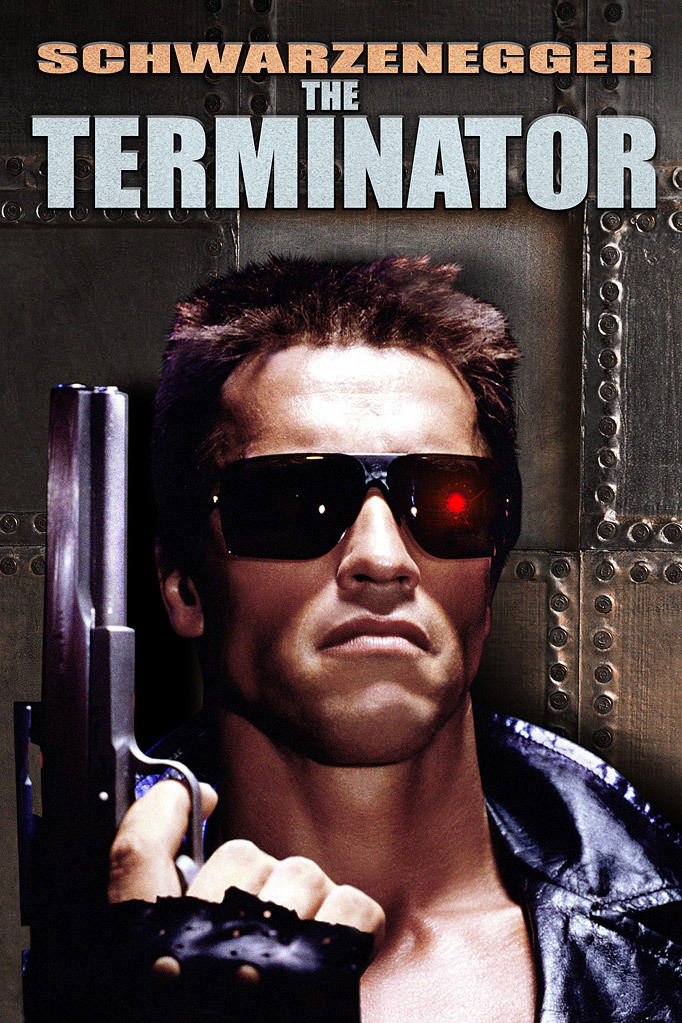
James Cameron directed “The Terminator”, a 1984 American science fiction action film. It stars Arnold Schwarzenegger as the Terminator, a cyborg assassin sent back in time from 2029 to 1984 to assassinate Sarah Connor, whose unborn son will one day save humanity from annihilation in a post-apocalyptic future by a hostile artificial intelligence. Kyle Reese, played by Michael Biehn, is a soldier sent back in time to protect Sarah.
Cameron and producer Gale Anne Hurd are credited with the screenplay, with co-writer William Wisher Jr. receiving credit for additional dialogue. “The Terminator” dominated the box offices in the United States for two weeks, and the film’s success spawned a franchise that included multiple sequels, a television series, comic books, novels, and video games.
The original film is a small-scale narrative about a future freedom fighter rescuing a waitress from a homicidal cyborg who wants to prevent her son’s birth. The film’s nightclub, dubbed “Tech Noir,” appears to allude to the film’s niche sci-fi subgenre. Film noir has always served as a forum for expressing contemporary cultural worries. “The Terminator” addressed humanity’s anxieties about the rapid growth of technology, by showing a machine as a destructive force.
These concepts, if anything, have grown more relevant with time. “The Terminator”, along with “Blade Runner”, were some of the key works that formed the “tech noir” genre by portraying these worries. The notion of urban degradation is prominent in film noir, and Cameron preserves this mood in “The Terminator”, which presents Los Angeles as a gloomy, dangerous, crime-ridden environment.
While “The Terminator” is a speculative sci-fi film, it is also a defining Los Angeles film with Cameron juxtaposing bright, dazzling lights against the darkness of the night to portray the essence of the city throughout the plot. The sci-fi element comes into play with the T-800 being an unstoppable killing machine, whose victims are usually powerless to resist him. I mean, there’s nothing more sci-fi than a cyborg assassin.
Looper (2012)
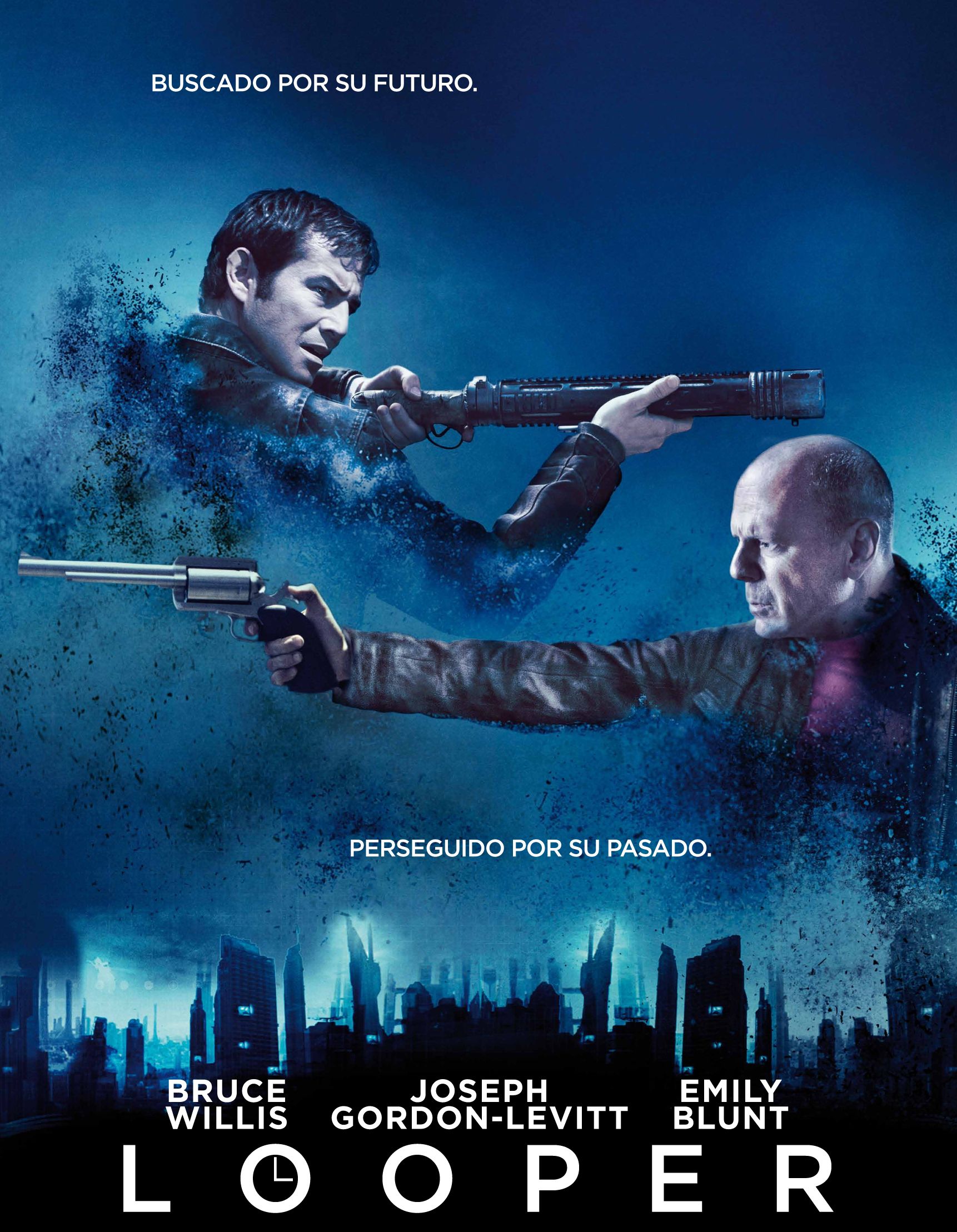
The next film on our list is “Looper”. “Looper” is a 2012 American science fiction action-thriller film written and directed by Rian Johnson, produced by Ram Bergman and James D. Stern. Joseph Gordon-Levitt, Emily Blunt, and Bruce Willis star in this flick. It centers around “present-day” contract killers known as “loopers” who are recruited by criminal syndicates from the future to kill victims who are sent back in time.
Joe, a “looper” hitman in the year 2044, is played by Joseph Gordon-Levitt. Loopers specialize in one task: killing targets sent back in time by the mob of the 2070s. Joe and his assassin brethren enjoy a high-end lifestyle in a world that has clearly seen the other side of riches but has a definite goal in mind. They’ll very certainly be sent back in time to dispose of their earlier selves, a process known as “closing the loop” in the film’s terminology.
The film’s universe is cleverly built using subtle visual and conversational hints. The blue LED light switches in Joe’s apartment and the styled automobiles help us know where we are without getting in the way, and the speech is packed with references that keep us there. The film is quite gloomy, and it is a return to the “noir” vibe of “Brick” following Johnson’s lighter-hearted “The Brothers Bloom”.
His major protagonists are all small-time crooks trying to make it big in a world where it’s evident that they’re doomed. The general atmosphere is dismal and bleak. It’s a typical noir plot in which a bunch of petty thieves screw the pooch and end up on the run. “Brick”, directed by Rian Johnson, transformed the unusual marriage of noir and technology into one of the decade’s most engaging pictures.
With “Looper”, Rian Johnson creates a scintillating neo-noir gem of existential quandaries and unavoidable fatalism. “Looper” pays homage to both “Blade Runner” and “The Killers” while adding its own take on noir fatalism. This culminates in an imaginative third act – incorporating additional sci-fi aspects that enhance and complicate the film’s bigger ideas about actualization, free will, and sacrifice.
Ghost In The Shell (1995)
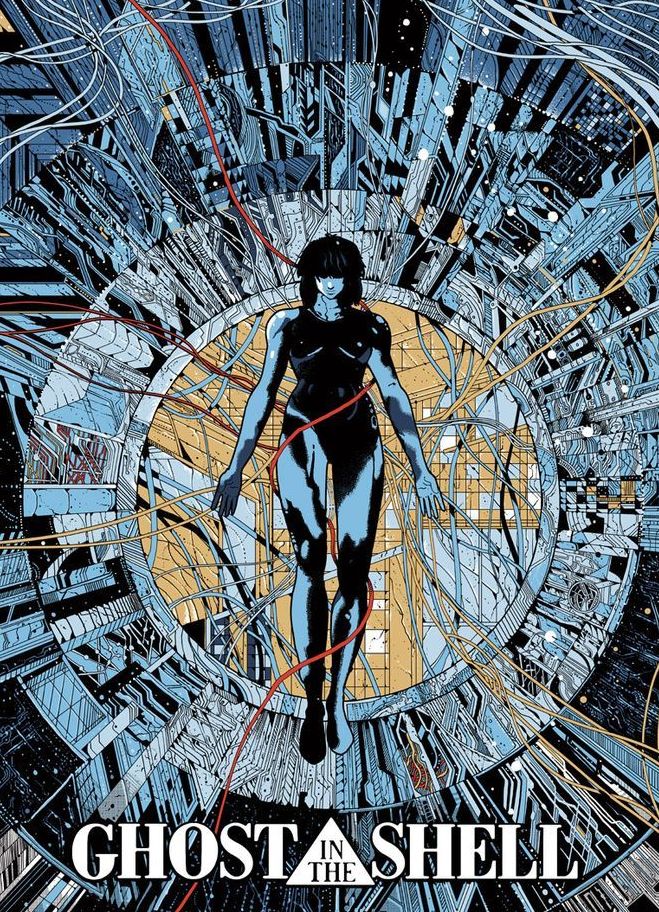
Mamoru Oshii directed the 1995 anime neo-noir cyberpunk thriller film “Ghost in the Shell”. The film is based on Masamune Shirow’s manga of the same name, which was adapted for the screen by Kazunori It. It stars Atsuko Tanaka, Akio tsuka, and Iemasa Kayumi in the lead roles. It is an international co-production between Japan and the United Kingdom, with Kodansha, Bandai Visual, and Manga Entertainment as executive producers and animation by Production I.G.
The film is set in 2029 Japan and follows Motoko Kusanagi, a cyborg public-security agent, on the hunt for the Puppet Master, a mystery hacker. The story includes philosophical ideas about self-identity in a technologically advanced environment. Kenji Kawai composed the music which contains vocals in classical Japanese. The visuals for the film were developed using a combination of conventional Cel and CGI animation.
“Ghost in the Shell” is the landmark 1995 film that together with “Akira” in 1988 and Hayao Miyazaki’s whole oeuvre established the popularization of anime overseas. It is a cyberpunk and Japanese animation aficionado’s dream. “Ghost in the Shell”, like “Blade Runner”, is a neo-noir mystery, and both films have a hero who develops a type of transcendent insight in the ending.
“Ghost in the Shell” is part of a long tradition of science-fiction films that examine the boundaries of mankind, technology, and the potential for consciousness within an artificial intelligence—all in the context of a dystopian future. Maj Kusanagi, the film’s female protagonist, is a genre emblem of strength and badassery. The imagery of the techno-dystopia is one that is beautifully executed and quite familiar to this genre in specific. It lends to the added noir film set in the future.
“Ghost in the Shell” is a film that is futuristic, psychological, and cyberpunk. Aside from the conventional cop vs. criminal plot, it delves into many philosophical issues concerning mankind and individuality. The film also looked at the coexistence of humans and technology, as well as how it impacts us. It had good action scenes, a terrific plot, and great animation for a 90s anime. It also has a notable cast of characters.
Upgrade (2018)
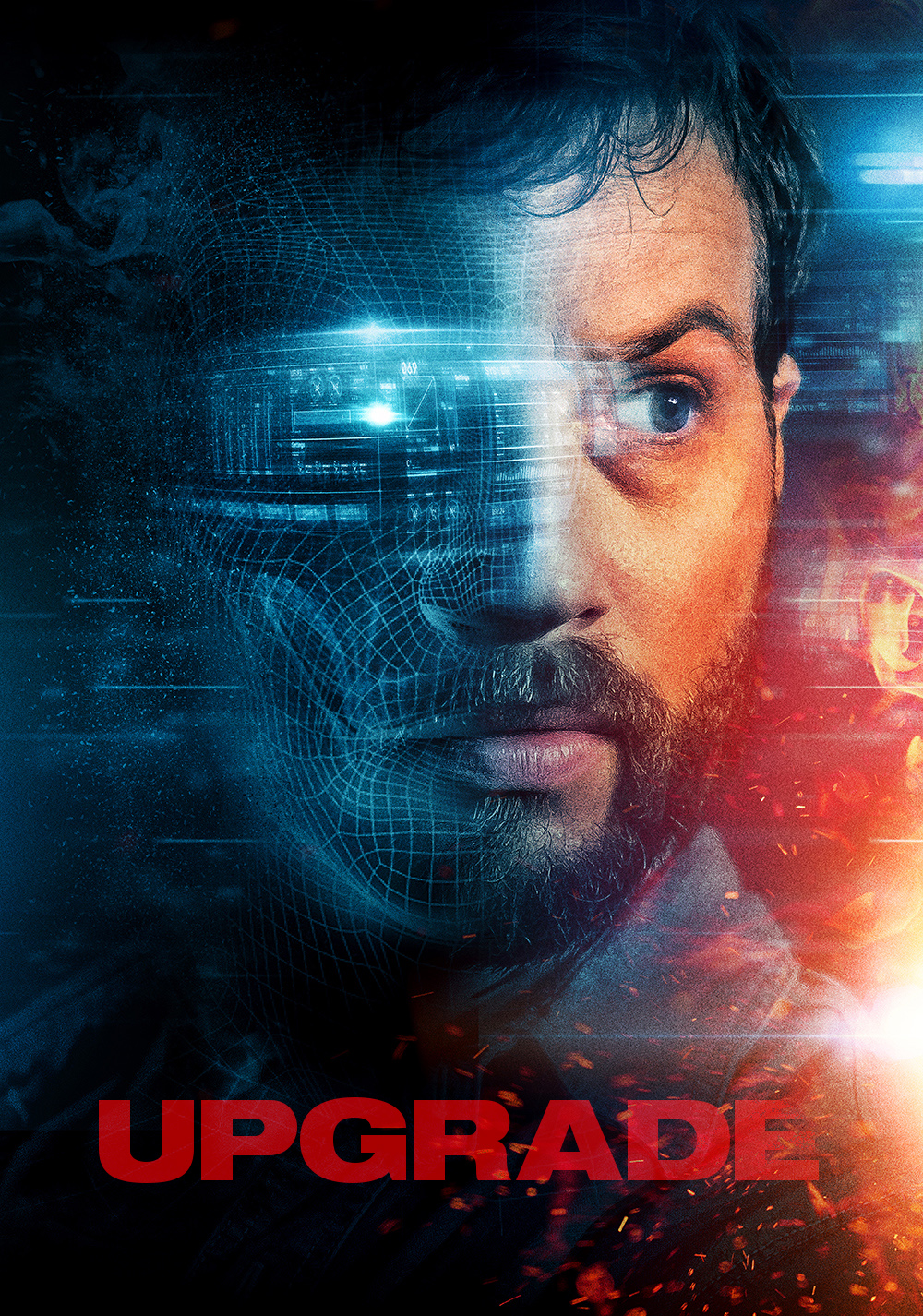
Leigh Whannell’s 2018 Australian cyberpunk action thriller “Upgrade” stars Logan Marshall-Green, Betty Gabriel, and Harrison Gilbertson. The plot revolves around a technophobe who is implanted with a chip that allows him to control his body after becoming paralyzed in a mugging. Jason Blum produced the picture through his Blumhouse Productions label. This is the film that established Whannell as a significant director/writer.
It’s a fantastic piece of tech noir sci-fi with a bit of horror thrown in, resulting in a gripping film that doesn’t pretend to be anything it isn’t. Instead, this film adheres to the genre’s nuts and bolts and constructs a well-layered film that satisfies from start to finish. The picture adheres to some of the traditional sci-fi themes of the 1980s and 1990s but smoothly blends in some gory violence that is clearly influenced by his work on the “Saw” and “Insidious” films.
The tone of the film is dark and grim, yet it has just the proper amount of synthesized soundtrack components and tech noir twists to remind one of the “Blade Runner”. It also had enough action and running to remind me of “Logan’s Run”. The film revels in the cheap, pulpy science fiction of yesteryear, allowing us to identify with Grey’s concerns while simultaneously warning us about the dangers of technology and AI going too far. Despite the fact that the story takes place in the future, it is not that far away.
The interiors are ultra-modern, which only adds to the danger of the grittier, more low-tech locations, such as a mafia bar or one of the assassins’ residences. Narratively, the film is pure noir, but by incorporating components of technology and futuristic breakthroughs, we now have the best of both worlds in this picture. This film will definitely keep you hooked and is reminiscent of the tech-noir movies of the 80s and 90s.
Dark City (1998)
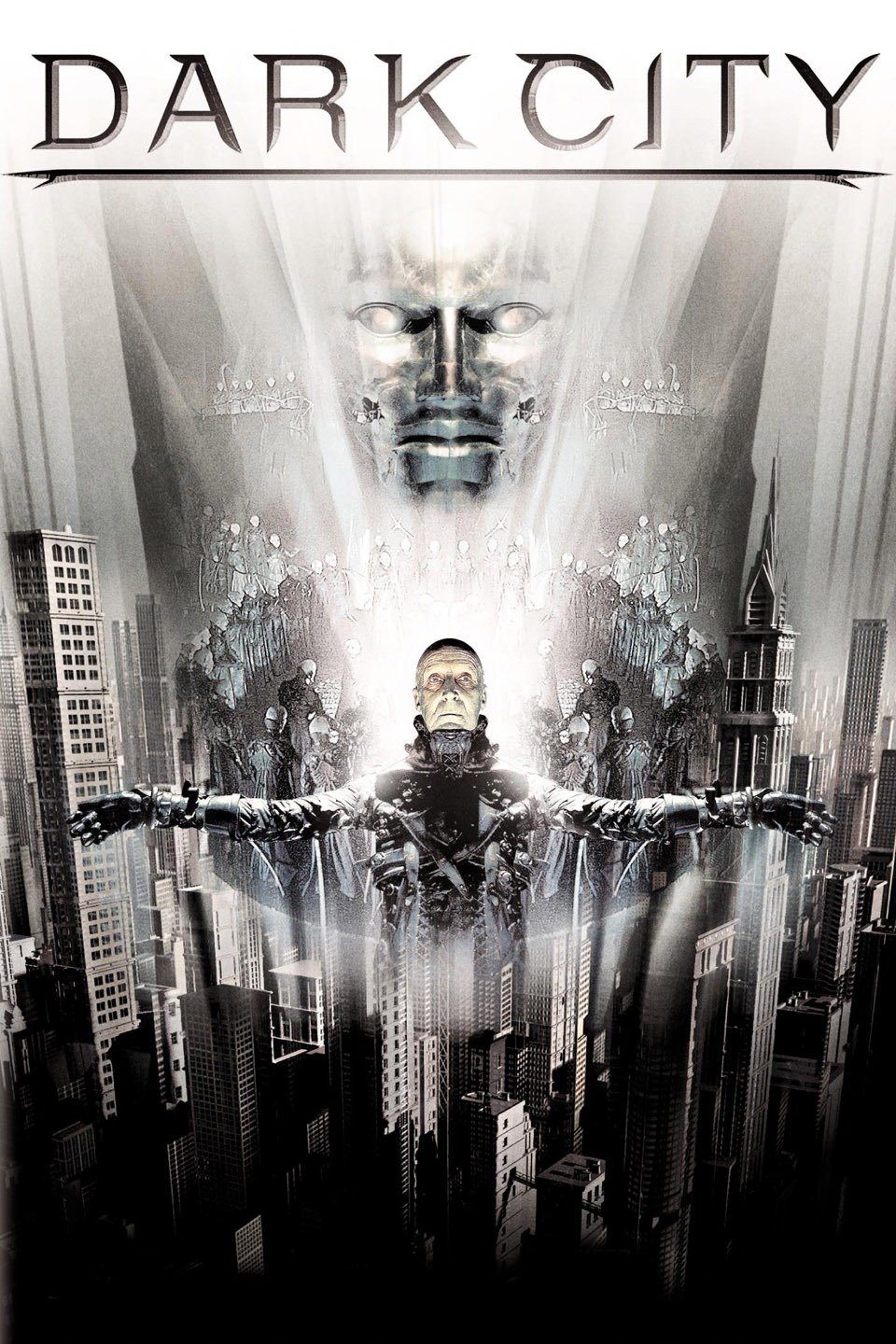
Alex Proyas directed “Dark City”, a 1998 neo-noir science fiction film starring Rufus Sewell, Kiefer Sutherland, Jennifer Connelly, Richard O’Brien, and William Hurt. Proyas, Lem Dobbs, and David S. Goyer wrote the script. Sewell portrays John Murdoch, an amnesiac who is accused of murder.
Murdoch is on the run from the police and a mysterious group known as the “Strangers”, as he attempts to discover his true identity and clear his name. “Dark City” was “The Matrix” before “The Matrix”, and its premise seemed to borrow heavily from prior science-fiction attempts. The film is disguised as a noir crime picture, complete with vintage automobiles and clothing. This is complemented with lightning-fast editing which was famous for its exceedingly short, fast takes.
“Dark City” still looks excellent visually, with the moments of morphing and twisting buildings holding up even after 15 years, which is especially surprising given the film’s low budget. The limited color palette creates an essential atmosphere for the setting, adding to the film’s claustrophobic effect. “Dark City’s” cast is delightfully varied, with standout performances from not just Sewell but also Kiefer Sutherland and Richard O’Brien.
William Hurt and Jennifer Connelly are great in their respective film noir personas. Over the years, the picture has developed a cult following, with critical acclaim from luminaries such as Roger Ebert. “Dark City” is unafraid of its oddities and revels in the fascinating, enigmatic environment it creates. It is unfortunate that the movie went unappreciated in its time but it has developed a cult following in recent years. We would definitely recommend this film if you’re a fan of the genre because if critics approval mean anything to you, this one is an unfound gem.
Total Recall (1990)
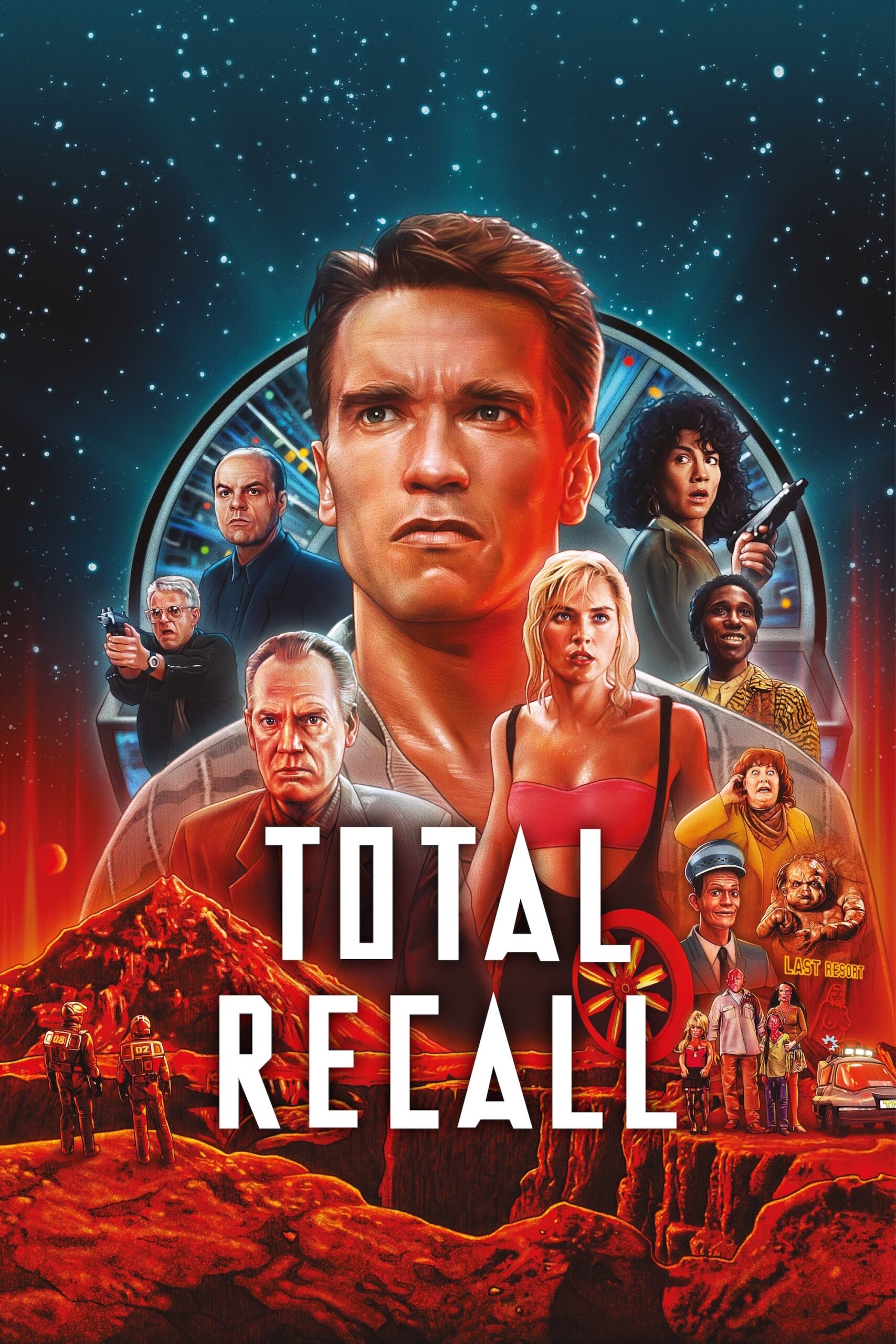
“Total Recall” is a 1990 American science fiction action film written by Ronald Shusett, Dan O’Bannon, and Gary Goldman and directed by Paul Verhoeven. Arnold Schwarzenegger, Rachel Ticotin, Sharon Stone, Ronny Cox, and Michael Ironside star in the film. “Total Recall” is based on Philip K. Dick’s 1966 short story “We Can Remember It for You Wholesale.”
It depicts the narrative of Douglas Quaid, a construction worker who receives a memory implant about a fancy trip to Mars. He later discovers that his journey is taking place in reality, as agents of a shadow organization attempt to prevent him from regaining memories of his past as a Martian secret agent, attempting to bring down the despotic rule of Martian tyrant Vilos Cohaagen. “Total Recall” isn’t quite loyal to the original short tale, but it’s closer to Philip K. Dick’s concept than its slightly more renowned cousin, “Blade Runner”.
“Total Recall” depicts a filthy, dreary future in a bleak manner. Arnold’s filthy language fits the world’s style of banality and grime. “Total Recall” combines technology with neo-noir, even delving into B-movie horror shock to make its point. This makes it similar to Verhoeven’s previous films such as “Showgirls” and “Robocop”.
The viewer has no idea what they’re going to see next. “Total Recall” is every bit the Schwarzenegger blockbuster you want it to be from the start, and it simply keeps getting better and better. Its setting makes it feel a little like “Blade Runner” or maybe “The Running Man” at first, but as the story progresses, you realize that “Total Recall” is a far more fun-loving sci-fi film, with regular laughter throughout. Its humor adds likability and personality to what could have been just another outer space frolic.
Above all, it’s a very enjoyable film with great action, compelling actors, and funny humor, as well as a fascinating and brilliantly ambiguous tale packed with gritty and brutal action and some profoundly grim moments.
Brazil (1985)
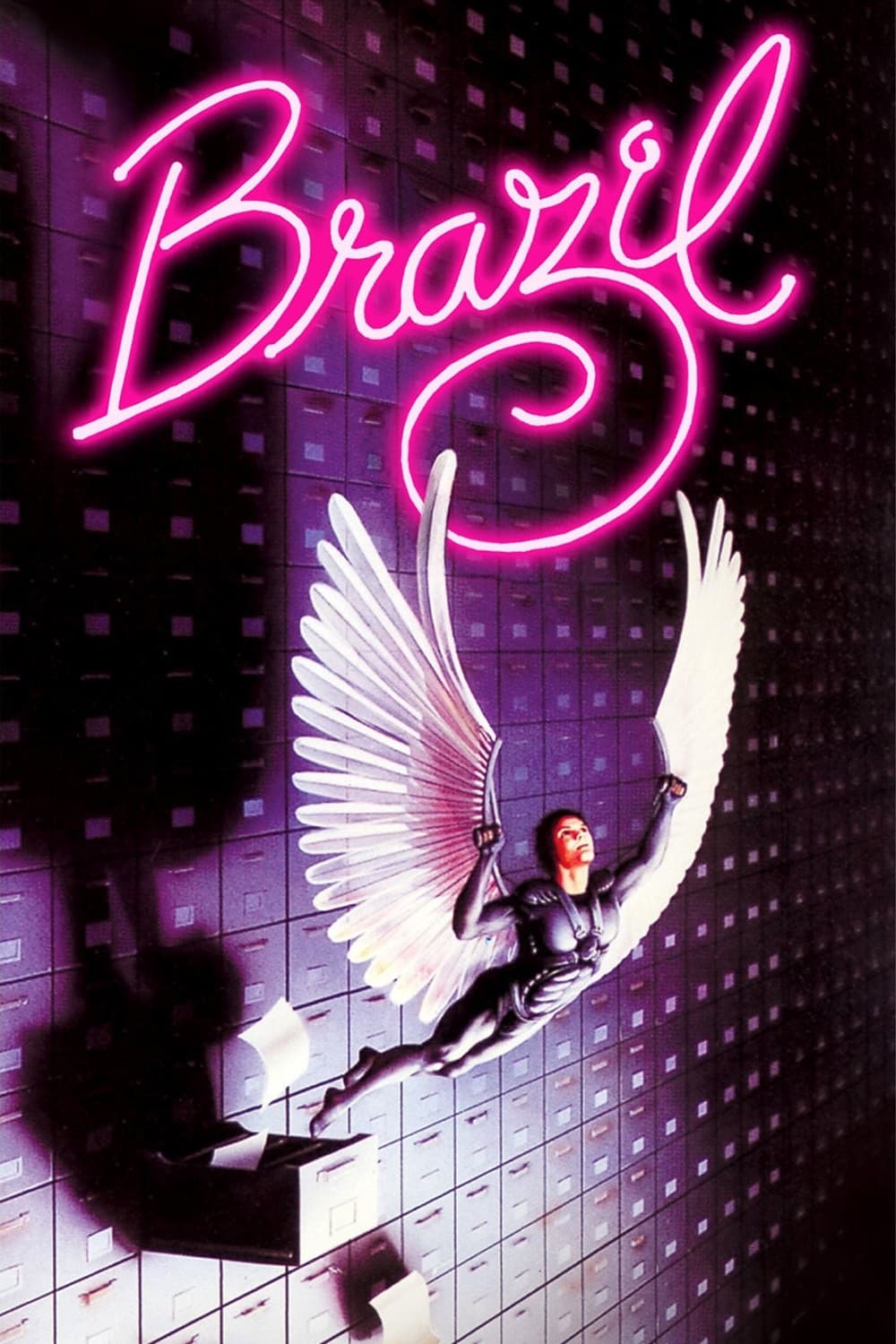
“Brazil” is a 1985 dystopian science fiction black comedy film directed and written by Terry Gilliam, Charles McKeown, and Tom Stoppard. The film stars Jonathan Pryce, Robert De Niro, Kim Greist, Michael Palin, Katherine Helmond, Bob Hoskins, and Ian Holm, among others. The story revolves around Sam Lowry, a low-ranking bureaucrat who is trying to find a woman who appears in his dreams.
He works in a mind-numbing job and lives in a cramped apartment in a dystopian future dominated by poorly maintained and wacky robots. “Brazil’s” satire of technocracy, bureaucracy, hyper-surveillance, corporatism, and state capitalism has been described as Kafkaesque and absurdist, and is reminiscent of George Orwell’s 1949 novel “Nineteen Eighty-Four”.
“Brazil” was given a retro-futurist style by Gilliam and his great production designer Norman Garwood, which eventually inspired the steampunk subculture, with an atemporal mix of the recognized and the irregular, giving the film a startling gloss. And you can bet that this graphic aesthetic spread like wildfire among creatives.
“Brazil” shines visually. The film employs practical effects to emphasize the ridiculousness of the settings, but it also delves into fantasy with Sam’s thoughts of flying, and terror with the lobotomy room. The story makes extensive use of the strange and bizarre. It is a civilization in which every step is tracked and everything has a place. “Brazil” is a fantastic film on many levels. While it is a comedy, it can also be quite hard-hitting science fiction with noir elements. It contains drama, romance, and tragedy, making it a film worth viewing numerous times.
12 Monkeys (1995)
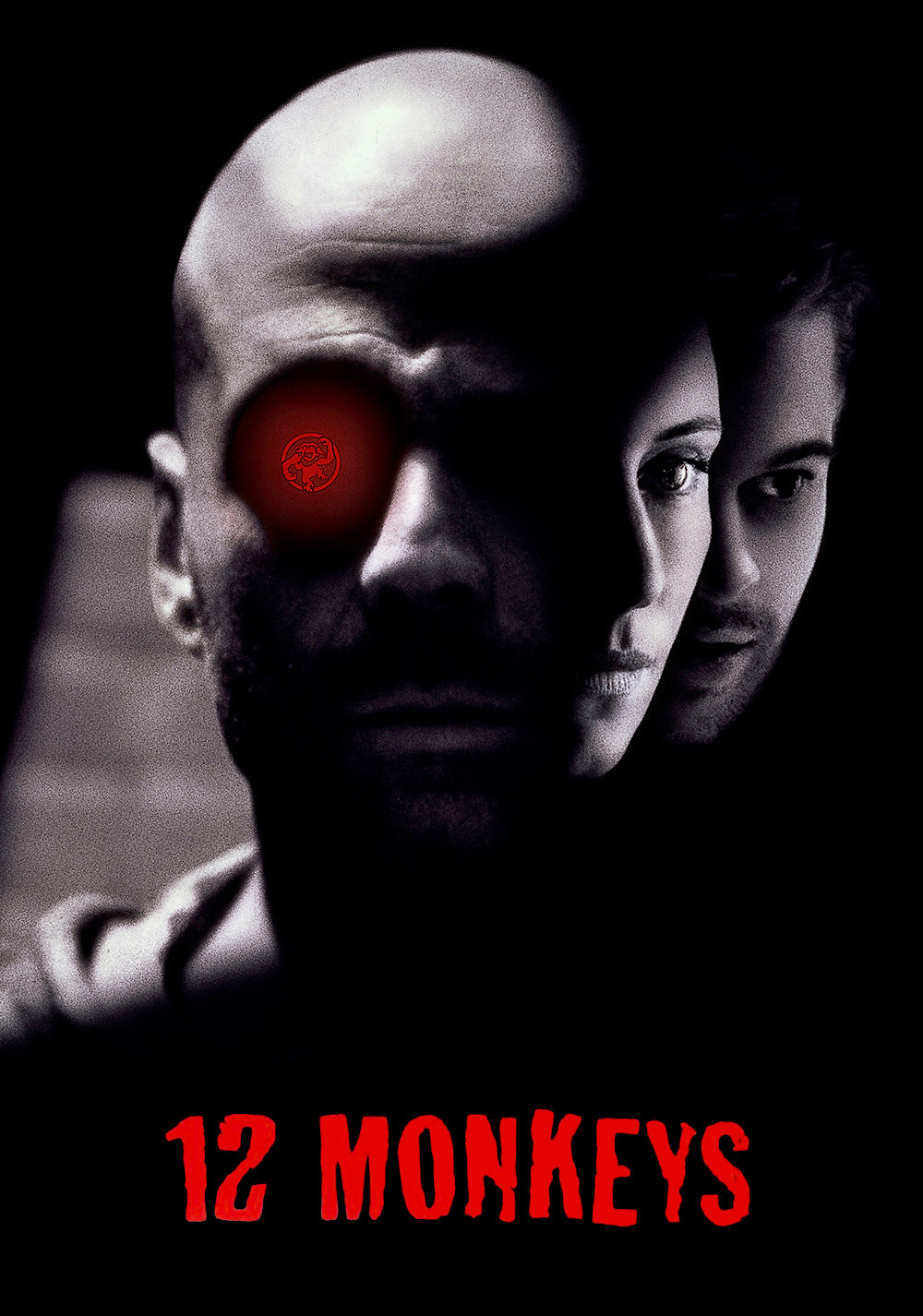
“12 Monkeys” is a 1995 American science fiction film directed by Terry Gilliam, that is based on Chris Marker’s 1962 short film “La Jetée”. It stars Bruce Willis, Madeleine Stowe, and Brad Pitt, with Christopher Plummer and David Morse in supporting roles.
David and Janet Peoples were hired for the script after Universal Studios purchased the rights to remake “La Jetée” into a feature film. Convict James Cole decides to participate in a mission in which he must travel back in time to find the major cause of a deadly holocaust outbreak. In 1996, a devastating virus wipes out almost all of civilization, forcing survivors to dwell underground. The virus is thought to have been unleashed by an organization known as ‘the Army of the Twelve Monkeys’.
This film is another excellent fusion of neo-noir and science fiction. It also has the slightly surreal earmarks of a Terry Gilliam film. “Brazil” and “Time Bandits” are two more examples. The plot twists and turns with time and geography. Aside from the obvious message of polluting our environment, the film’s subtext implies that humanity is doomed not only for failing to connect in the here and now, but also the fact that we can’t learn even after looking at our past.
Terry Gilliam frequently treats the atmosphere as a key character, and the tone of craziness that pervades his narrative is funneled through this beautifully produced atmosphere. Furthermore, the director’s fondness for elements from the industrial revolution such as ducts, gears, and pulleys, is visible in his depiction of the gloomy, underground industrial world of the apocalyptic future. The excellent performances also contribute to the story’s ambiguous tone. Overall, “12 Monkeys” is a sophisticated and wonderfully enjoyable time-travel thriller, that relies on a good ensemble and excellent visuals rather than a shallow CGI extravaganza.
These ten films are the ones that underpin the genre of tech-noir and serve as some of the most successful ventures. If you’re new to the genre, then these films are definitely the ones to start your tech-noir journey with.
